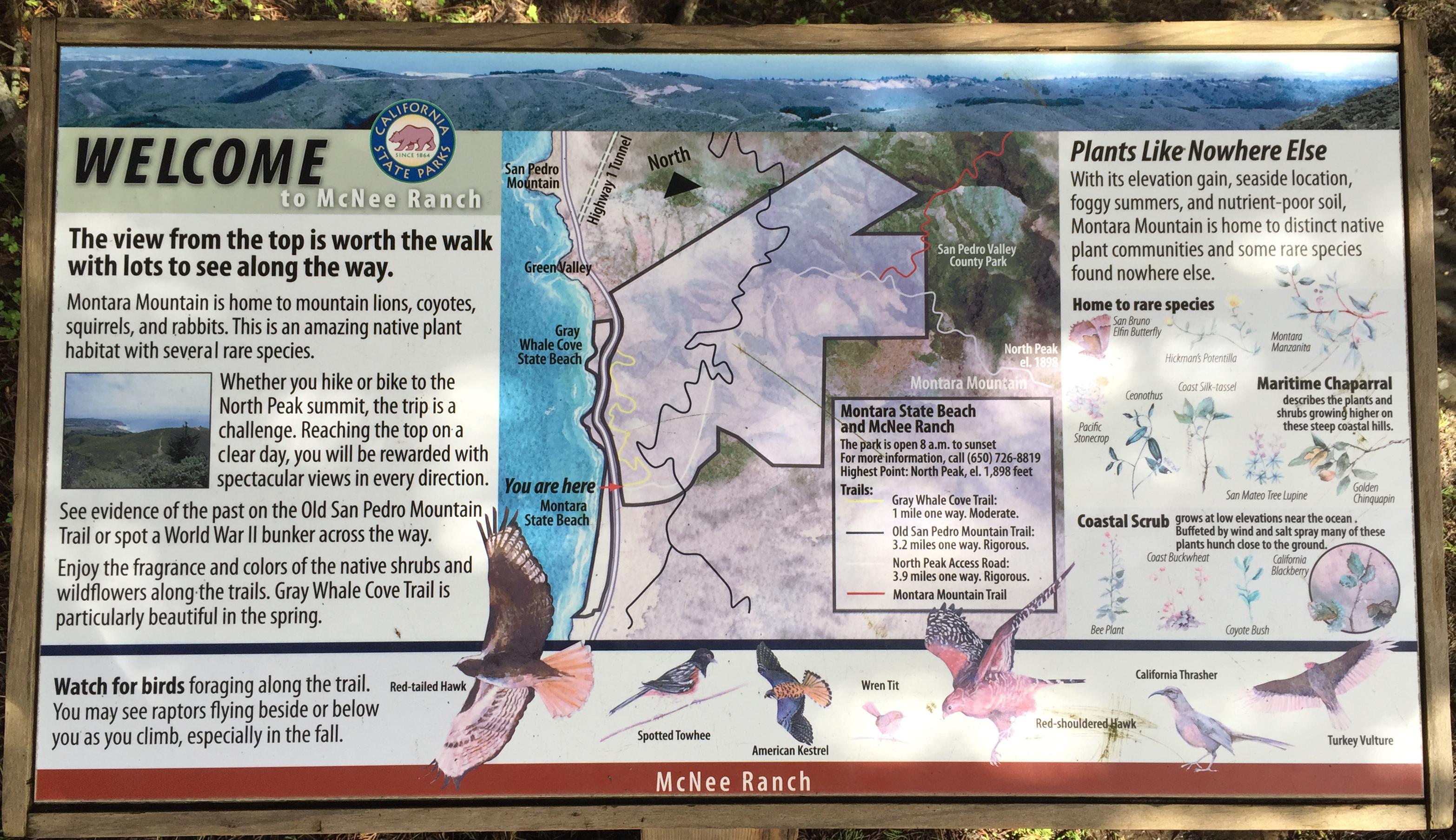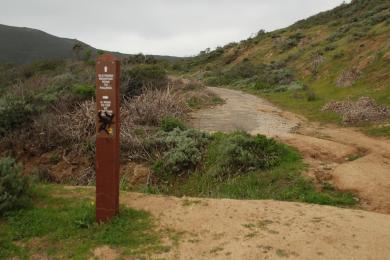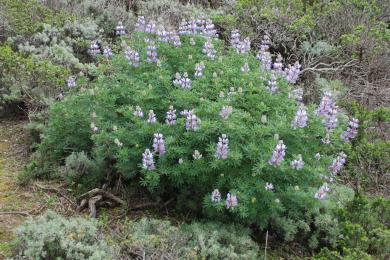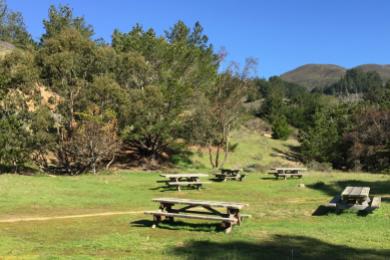McNee Ranch, part of Montara State Beach, is located on the west face of Montara Mountain, north of Half Moon Bay and south of Pacifica. The mountain is a northern spur of the Santa Cruz Mountains and features the only undisturbed coastal mountain habitat found on over 100 miles of coastline. It is an ecological island of natural biological diversity. Its steep slopes have minimized human impact, making it home to plant and animal communities found nowhere else in the world.
The park is open to hiking, biking, horseback riding, and walking dogs on leash. Please use courtesy on the trails, travel at a safe speed, and announce yourself when approaching others.
The trails are moderate to rigorous, offering spectacular views of the coast. Park trails lead to North Peak (1,898 feet) where, on a clear day, you can see the Pacific, San Francisco Bay, Point Reyes, and Mount Diablo. Be prepared for the weather to change quickly with incoming fog and wind or simply from elevation changes. Wear sturdy shoes with good traction, as the steep trails can get very slippery.
A few cars can park at the Martini Creek entrance, located on the east side of Highway 1 just north of the town of Montara, and across from Montara State Beach. Cars can also park in the Montara Beach lots or in the Gray Whale Cove Beach parking lot. The Gray Whale Cove lot is the trailhead for the Gray Whale Cove Trail into McNee Ranch.




